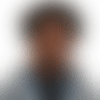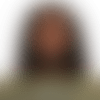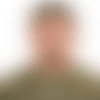With the start of the 2023 NFL regular season just around the corner, NFL.com draft analyst Chad Reuter projects the best- and worst-case scenarios for 17 intriguing defensive rookies.
Projected statistics are based on their expected role and success of their squad in 2023, as well as the recent production of first-year players with similar talent and circumstances.

Drafted: Round 1, No. 3 overall
Best-case scenario: The No. 3 overall pick is a relentless edge menace, using his quickness off the ball and second and third efforts to chase down quarterbacks trying to avoid his grasp. His bull rush is effective against much larger tackles because he converts speed to power, then uses his strong hands to shed and attack ball-carriers.
Worst-case scenario: Anderson is unable to hold up on an every-down basis against powerful veteran offensive tackles. He doesn't execute multiple pass-rush moves to get his blockers off balance, so he gets taken around the pocket and quarterbacks step up to avoid him.
Projected stats: 60 tackles and 10 sacks.

Drafted: Round 1, No. 5 overall
Best-case scenario: Witherspoon's tenacity makes him one of the better nickel defenders in the league in a short time. He negates slot receivers with his physical play and runs roughshod in the backfield when coming off the edge or hitting gaps to stop runs for minimal gains.
Worst-case scenario: The top-10 pick does not show the recovery speed or focus on proper technique to stay with the quickest or largest slot receivers, relying on grabbing his man's jersey to stay in phase. This results in penalty flags that provide his opponents crucial first downs.
Projected stats: 75 tackles and 2 INTs.

Drafted: Round 1, No. 7 overall
Best-case scenario: Giving the foot injury sustained at Texas Tech last November time to heal during the offseason allows Wilson to be ready to make an impact early this fall. The 6-foot-6, 275-pounder's supreme length helps him fend off veteran offensive linemen at the line of scrimmage, and his ability to convert speed to power as a pass rusher gets him on the field regularly early in his rookie campaign.
Worst-case scenario: His effectiveness is limited throughout the year as he works back from the foot injury. The time lost during training camp puts him behind the NFL learning curve in terms of effectively rushing the passer, delaying his impact until late in the year -- or 2024.
Projected stats: 35 tackles and 4 sacks.

Drafted: Round 1, No. 9 overall
Best-case scenario: Already impressing veteran teammates, Carter's explosiveness and strength off the snap make him difficult for even the savviest interior linemen to handle. He and Fletcher Cox comprise a dynamic duo in obvious passing situations, driving opposing quarterbacks (and offensive coordinators) crazy.
Worst-case scenario: The reported issues with Carter's work ethic coming out of Georgia begin to surface. He fails to win one-on-one consistently, losing reps to third-year pro Milton Williams.
Projected stats: 40 tackles and 4 sacks.

Drafted: Round 1, No. 13 overall
Best-case scenario: The former Hawkeye is not as raw as most projected during the pre-draft process. He overwhelms tackles with his power and agility off the edge to be an excellent combination with second-year rusher Kingsley Enagbare. Van Ness is a fixture on early downs because of his ability to play the run, allowing Rashan Gary to regains his sea legs early in the year after an ACL tear ended his 2022 season in November.
Worst-case scenario: He is unable to win with speed off the edge and his power rush is less effective against NFL blockers than it was in college, limiting his snaps in obvious passing situations.
Projected stats: 40 tackles and 4 sacks.

Drafted: Round 1, No. 15 overall
Best-case scenario: McDonald's length and bend make him too valuable to keep off the field, so he plays on early downs more often than expected. If a defensive end ahead of McDonald on the depth chart falls to injury, the first-round pick steps into a starting role which he never relinquishes.
Worst-case scenario: His lean frame (6-3, 241 pounds) makes it relatively easy for better pro tackles to keep him at bay. Effective play by veterans Carl Lawson, John Franklin-Myers and/or 2022 first-round pick Jermaine Johnson II limits his snap count this season, pushing off his potential breakout campaign to 2024.
Projected stats: 25 tackles and 6 sacks.

Drafted: Round 1, No. 16 overall
Best-case scenario: Forbes is a turnover (and scoring) machine in the NFL -- just like he was in college, when he intercepted 14 passes, returning an NCAA-record six for touchdowns. His speed, length and determination make it difficult for opposing receivers to separate during the route or hold onto passes once they arrive.
Worst-case scenario: His listed 180-pound frame (he weighed 166 at the NFL Scouting Combine) allows stronger outside receivers to get separation off the line, as well as down the sideline, and run through tackle attempts. Forbes is unable to convert turnover chances as well as he did at Mississippi State.
Projected stats: 60 tackles and 3 INTs.

Drafted: Round 1, No. 17 overall
Best-case scenario: Gonzalez uses his athleticism to stick with receivers and takes advantage of his improved ball skills to give the ball back to his offense. His physicality outside and against the run exceed expectations, making him an excellent all-around defender.
Worst-case scenario: Gonzalez doesn’t consistently stay with physical receivers at the top of the route or win downfield battles for the football. Also, he fails to provide adequate support against the run.
Projected stats: 55 tackles and 4 INTs.

Drafted: Round 1, No. 18 overall
Best-case scenario: Campbell's constant presence around the ball makes him the missing piece in the middle of Detroit's defensive scheme. His secure tackling and ability to track down ball-carriers allow him to rack up tackles. He stops crucial third-down plays to halt drives.
Worst-case scenario: He doesn’t make many game-changing plays, instead providing the solid effort that a Day 2 or Day 3 pick at the position could have contributed. The Lions’ defense doesn’t make the leap some are anticipating.
Projected stats: 85 tackles, 2 sacks and 1 INT.

Drafted: Round 1, No. 19 overall
Best-case scenario: Kancey returns from a calf strain for the start of the year. His explosiveness off the ball appears sooner rather than later. He gains leverage and wins gaps, pressuring quarterbacks and disrupting run plays.
Worst-case scenario: The calf strain suffered early in training camp precludes him from playing early in the year, stunting his development. After he returns, a lack of size prevents Kancey from getting a push inside, forcing him into a sub-package role.
Projected stats: 30 tackles and 3 sacks.

Drafted: Round 1, No. 24 overall
Best-case scenario: Banks utilizes his speed and toughness to stay with receivers downfield and attack plays in front of him, improving each week in his ability to read routes and recover quickly from strong moves by his assignment. He improves the Giants' ability to create turnovers after they intercepted a league-low six passes in 2022.
Worst-case scenario: His inexperience (22 starts in four years at Maryland) shows against NFL receivers, as he loses leverage and allows separation. Banks gets into the habit of panicking at the top of the receiver's route, holding long enough to earn penalty flags.
Projected stats: 50 tackles and 2 INTs.

Drafted: Round 1, No. 26 overall
Best-case scenario: Smith is a run-stuffer in the middle of Dallas' defense, shedding blocks and eating space to make life easy for the team's linebackers. He gets upfield on pass plays, pressuring quarterbacks and fighting through blocks to get sacks if the ball doesn't come out on time.
Worst-case scenario: He provides some flashes as part of a rotation up front but does not separate from blocks or affect plays often enough to justify a late first-round selection. Quarterbacks and running backs dodge his advances with impunity.
Projected stats: 40 tackles and 1.5 sacks.

Drafted: Round 1, No. 28 overall
Best-case scenario: The former Clemson Tiger makes the most of his opportunities as a backup end this season. He pushes tackles backward with his strength and quickly wins with his hands around the edge to provide a spark behind Trey Hendrickson and Sam Hubbard.
Worst-case scenario: Murphy is not explosive enough off the snap or strong enough with his hands to win against NFL tackles, finding himself at the end of the rotation as a rookie behind third-year players Joseph Ossai and Cam Sample.
Projected stats: 25 tackles and 2.5 sacks.

Drafted: Round 1, No. 29 overall
Best-case scenario: Bresee joins free-agent acquisitions Nathan Shepherd and Khalen Saunders in improving the team's run defense. His hustle and agility make him a threat on third downs to break through the line and wrestle quarterbacks to the ground.
Worst-case scenario: The top college recruit in the 2020 class fails to routinely overpower NFL guards and centers. He consistently ends up a step late to affect pass or run plays.
Projected stats: 25 tackles and 2 sacks.

Drafted: Round 1, No. 30 overall
Best-case scenario: Smith regularly spells Pro Bowler Haason Reddick to rush the passer, lock down short zones and prevent running backs from getting to the sideline. He slaloms through gaps and chases down ball-carriers to shut down opponents' drives if paired with Reddick on third down.
Worst-case scenario: Coaches keep Reddick on the field as much as possible because of his playmaking ability, limiting Smith's opportunities. His lack of bulk/length makes it tough for him to overpower or shed NFL linemen as well as he did in college.
Projected stats: 30 tackles and 3.5 sacks.

Drafted: Round 1, No. 31 overall
Best-case scenario: The Chiefs place Anudike-Uzomah opposite last year's first-rounder, George Karlaftis, to get maximum pass-rush ability on the field. The rookie's speed around the corner and willingness to fight for gaps when rushing inside is a constant thorn in the side of offensive tackles.
Worst-case scenario: Anudike-Uzomah cannot hold up in the run game, giving up 60 to 70 pounds to offensive tackles outside, forcing Mike Danna and others to take on more snaps. His pass-rush moves are not varied enough to consistently beat his man as games wear on, limiting his effectiveness in crucial situations.
Projected stats: 45 tackles and 4 sacks.

Drafted: Round 2, No. 32 overall
Best-case scenario: Porter rotates with mentor Patrick Peterson to keep both fresh throughout the year. The former Penn State star’s size and use of his 34-inch arms make it difficult for the Steelers to leave him off the field. He plays with discipline and converts chances to turn the ball back over to Kenny Pickett and Co.
Worst-case scenario: Receivers separate from Porter with short-area quickness. He cannot recover quickly enough to get into position to use his long arms to break up crossing and sideline routes. A lack of discipline in coverage results in giving up big plays down the field.
Projected stats: 40 tackles and 2 INTs.
Want to follow these storylines and more? NFL+ gives you the freedom to watch live out-of-market preseason games, daily coverage on NFL Network, the best NFL programming on-demand and much more! Plus, NFL RedZone is now part of NFL+ Premium! Learn more about NFL+.




























